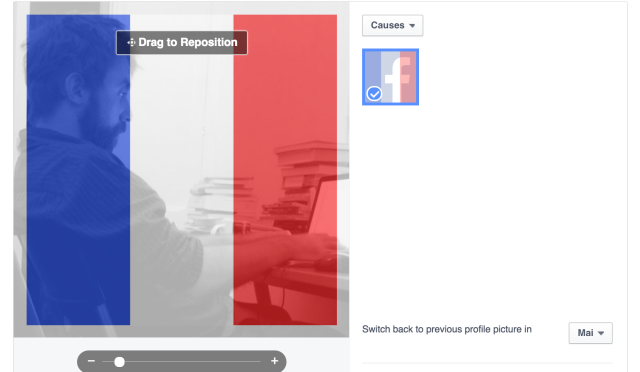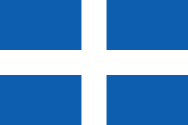Todas las gracias a Alberto quien conocί en Croazia que me mostrό Vetusta Morla.
Category: Deutsch/Español
REVIEW: MUCHAS VIDAS, MUCHOS MAESTROS
 Muchas Vidas, Muchos Maestros by Brian L. Weiss
Muchas Vidas, Muchos Maestros by Brian L. Weiss
My rating: 3 of 5 stars
Este libro se me sugirió de Fede, un uruguayo que conocí por suerte en el candombe de un domingo como todos los otros. Dijo que cambió su vida y le hizo pensar en su “misión de vida”, que para él era algo como ofrecer el amor a los otros en cualquier oportunidad. Sólo unos días después, lo ví en la librería Moebius al lado de la Posada al Sur donde viví cuando estaba en Montevideo, y era casi la mitad del precio de todos los otros libros. No podía no comprarlo.
Bueno, claro que me interesaba el tema, y aunque no podía entender todo, como sigo aprendiendo el idioma español, creo que era un libro bién escrito. Quiero decir que la manera de escribir de señor Weiss era simple pero comunicaba mucho.
Estoy en una fase cuando estoy leyendo muchos libros y material sobre la reencarnación, y algunas veces lo que se encuentra en un libro se contradice por lo que hay en otros. Diferentemente dicho, lo más que investigas, lo más dificil es encontrar fuentes válidas que tienen algo que ver entre ellos en los detalles. Creo en la reencarnación, pero no creo que Muchas Vidas sea el mejor libro para presentar el tema y su profundidad verdadera a alguna persona que ya no está convencida y que mira a la cuestión con un mente crítico, tan por su falta de algún tipo de prueba (quién es Catherine?) como por la impresión que intenta de darnos, que es un libro escrito por un psiquiatra, es una impresión que sin embargo no puede sostener. Este estilo me hizo preguntarme si todo esto realmente sucedió. Parece un mito, una historia basada en hechos reales y como todas las historias similares, es dificíl separar en ella lo verdadero de lo falso. Por eso no valen como pruebas sino como inspiraciones, y esto es sin duda algo muy personal y no cuantificable.
En todo caso, todavía era una lectura interesante con puntos espirituales válidos y con valor para ver la vida por otros ojos, como si el hecho de la inmortalidad del espíritu fuera un hecho indudable, y todo esto la verdá me está poniendo a pensar cada vez más.
Ο ΚΙΝΔΥΝΟΣ ΤΟΥ ΝΑ ΒΑΖΕΙΣ ΣΤΗΝ ΕΙΚΟΝΑ ΠΡΟΦΙΛ ΤΟ ΦΙΛΤΡΟ ΜΕ ΤΗ ΓΑΛΛΙΚΗ ΣΗΜΑΙΑ
Είδα αυτό το άρθρο και αντιπροσώπευε τόσο εύγλωττα και απλά τις δικές μου σκέψεις που αποφάσισα να το μεταφράσω.
Με αρχή την επίθεση στο Παρίσι την περασμένη Παρασκευή, το Facebook προώθησε ένα προαιρετικό φίλτρο σε όλους τους χρήστες του δικτύου. Το φίλτρο προορίζεται ως ένδειξη αλληλεγγύης με τα θύματα της επίθεσης, αλλάζοντας τη φωτογραφία προφίλ με μία η οποία βάζει ως φόντο στην πρωτότυπη φωτογραφία τα χρώματα της γαλλικής σημαίας. Φυσικά οι χρήστες άρχισαν αμέσως να χρησιμοποιούν το εργαλείο αυτό, επηρεασμένοι από το συναισθηματικό σοκ που τους προκάλεσαν οι επιθέσεις στην γαλλική πρωτεύουσα. Είναι προφανές (αν και δεν νομίζω ότι είναι επιθυμητό) ότι στον κόσμο υπάρχουν νεκροί Α’ κατηγορίας και νεκροί Β’ κατηγορίας, ακόμα και Γ’ ή Δ’ κατηγορίας. Είναι μέχρι ένα σημείο ευνόητο ότι έναν Ευρωπαίο πολίτη τον αγγίζει περισσότερο μια επίθεση στο Παρίσι παρά μια στην Βυρητό. Για την ακρίβεια, αν λάβουμε υπ’ όψη μας την κάλυψη των ΜΜΕ που έλαβαν η μία και η άλλη, θα ήταν περίεργο αν έναν πολίτη του Ισπανικού κράτους, για παράδειγμα, τον επηρεάζε περισσότερο μια επίθεση στον Λίβανο απ’ ότι μία στη Γαλλία.
Η συλλογική χειραγώγηση απ’ τα μεγάλα μέσα επικοινωνίας είναι προφανής. Η σιωπή που κυριαρχεί ή η ψυχρότητα κατα την προβολή του αριθμού των νεκρών όταν πρόκειται για μια επίθεση η οποία έχει λάβει μέρος στον γνωστό ως Αραβικό Κόσμο, έρχεται σε αντίθεση με την δραματική παρουσίαση όταν πρόκειται για μια επίθεση σε ευρωπαϊκό ή βορειοαμερικανικό έδαφος. Και αν και αυτή η επικοινωνιακή στρατηγική είναι ένα πετυχημένο μοντέλο δημιουργίας πολιτών Α’ και Β’ κατηγορίας, συνεχώς αυξάνονται οι Ευρωπαίοι που αντιλαμβάνονται ότι είναι θύματα χειραγώγησης και προσπαθούν να ξεφύγουν από την επιρροή των μεγάλων ΜΜΕ, τα οποία με τις πράξεις ή την απραξία τους χτίζουν τείχη μεταξύ κοινωνίων τα οποία μοιάζουν απροσπέλαστα. Ωστόσο, με την καινοτομία του, το φίλτρο στο Facebook συνεπάγεται έναν κίνδυνο που πιάνει την πλειοψηφία των κυβερνοναυτών με τις άμυνες τους ιδιαίτερα χαμηλές.
Η χρήση του φίλτρου του Facebook ως ένδειξη αλληλεγγύης με τα θύματα της επίθεσης στο Παρίσι είναι η στήριξη ενός οράματος του κόσμου στον οποίο μόνο οι θάνατοι των πολιτών απ’τη Δύση έχουν σημασία. Μέσω αυτής της μικρής κίνησης χτίζεται άλλο ένα τείχος σ’ αυτο το φρούριο του 21ου αιώνα που είναι η Ευρώπη, γεμάτη υπηκόους που πεθαίνουν απ’ το φόβο και χαρίζουν την κριτική τους ικανότητα σε εταιρίες και δημόσια σώματα ως αντάλλαγμα για μια μικρή αίσθηση ασφάλειας. Στον Λίβανο και στο Ιράκ, στο Ιράν και σε οποιοδήποτε άλλο μέρος του κόσμου, όταν σκάει μια βόμβα ή πέφτει ένας πύραυλος, υπάρχουν αδέρφια που υποφέρουν, πατεράδες και μανάδες που λιποθυμούν σαν μαθαίνουν τα νέα, φίλοι που ψάχνουν απεγνωσμένα τα ίχνη των συναδέρφων τους απ’ το πανεπιστήμιο ή απ’ τη δουλειά. Είναι ευνόητο (αν και δεν νομίζω ότι είναι επιθυμητό) ότι έναν Ευρωπαίο πολίτη τον πονάει περισσότερο μια επίθεση στο Παρίσι απ’ ότι στην Βηρυτό. Πολλοί από εμάς έχουμε φίλους στο Παρίσι ή το έχουμε επισκεφθεί μία ή περισσότερες φορές. Το Facebook όμως είναι μια παγκόσμια εταιρία και με τέτοιες κινήσεις το μόνο που κάνει είναι να εγκαθιστά μια ηγεμονική δομή προτεραιοτήτων σύμφωνα με την οποία οι νεκροί Δυτικοί δημιουργούν ανησυχία και κινητοποίηση και τα θύματα, για παράδειγμα, της επίθεσης στην Βηρυτό πριν από δυο μέρες, πολύ απλά δεν μετράνε. Ή μήπως μας δώσανε την επιλογή φίλτρου με τη σημαία του Λιβάνου; Η επικύρωση αυτού του οραμάτος του κόσμου μου φαίνεται εξαιρετικά επικίνδυνη. Περισσότερο όταν το κάνουμε χωρίς ούτε καν να το καταλαβαίνουμε.
Èric Lluent, δημοσιογράφος (Βαρκελώνη, 1986)
REVIEW: HIJOS DE LOS DÍAS
 Los hijos de los días by Eduardo Galeano
Los hijos de los días by Eduardo Galeano
My rating: 3 of 5 stars
Un pequeña exposición por cada día del año tomada de la historia del mundo y de la América Latina. La mayoría son ligeramente interesantes, pero no puedo acordar ninguna en este momento. Bueno, algunas palabras eran más difíciles para mi nivel de español, pero creo que no es mucho que no entendí al nivel de significado. Eduardo Galeano es una importante representación de Uruguay en el mundo, mi primer día en Montevideo era su velatorio, así que tengo un punto suave para este hombre. Quiero ya más libros de él, no sé si en español o otro idioma, Patas Arriba en griego era buenisimo.
Prestado de Roberto
EARWORM GARDEN // ESTO NO ES CAFÉ
Laura invited me yesterday to some bar at José Enrique Rodó 1830. Some of her friends were playing music, along with two other acts: a guy who played the guitar kind of experimentally and did the Hun-Huur-Tu thing with this throat (but more skillfully than Hun-Huur-Tu themselves, it seemed to me) and another one I missed forever because it was time to catch the bus back home.
It was 100 pesos for the entrance (~31 pesos to a euro; when I got here 4 weeks ago it was 29—I’m rich!) and another 100 pesos for a strange kind of alcoholic beverage people drink a lot in Uruguay that tastes very much like Fisherman’s Friend. Imagine that, with coke.
A few minutes after I got my drink, her friends started playing their music. The whole concert reminded me of the very first venues in Rock Band, when you first set out and play the easy songs, where supposedly only your friends and some of their friends, at best, come and see you. They were amateur musicians, you could tell: their songs were mostly uncomplicated, and they had a bunch of different instruments, such as unusual percussion (e.g. the lower jaw of a cow, complete with teeth) and types of guitars I would imagine the likes of Inti-Illimani would always keep within arm’s reach. One or two of them were more skilled, but the group as a whole was not. They would go in and out of tune in their polyphonic segments etc. Nevertheless, they left me with a positive impression. I thought they were an interesting group, doing what they enjoy, not caring about perfection and not being scared to experiment in front of an audience.
Then, from the minute I woke up today on, one particular song from yesterday keeps playing in my head. It’s the one in the media player above. It’s a recording I made with my smartphone, that is why the quality is abysmal (I can hear my H2n’s vindictive laugh from the corner—that’s what you get for not having proper sound recording equipment with you ALWAYS ). I can tell that what they’re singing in the chorus is probably “esto no es café” (this isn’t coffee), and I can catch some of the rest of the words but the quality of the recording is so bad and the skill level required for understanding sung language is so high I’m not even bothering.
All that’s nice and good, but something soon dawned on me after listening to his recording a couple of times: I will probably never listen to this song in better quality. This is it.
In this day and age where every original song has a proper recording done in a studio and posted on Youtube, problems like one-off performances, live recordings or poor reproduction quality due to technical reasons seem absurd and things of the lo-tech past. But here we are: an earworm of a song I will never listen to in better quality. If this band never played again, this song would live in posterity in the form of this shitty recording. This realisation gives me similar vibes to listening to the world’s first recording of a song (but not the oldest sound recording in general, that’s too creepy, man). Suddenly you realise it’s a recording; somebody recorded it, it was there and then suddenly thrashed into infinity. It wasn’t born from nothing the way contemporary music makes me think about it sometimes. Somebody was recorded who, after the job was done, left and went on with his or her life. The difference in quality makes me aware of factors I’m sure were invisible for people playing the music. “Any sufficiently advanced technology is indistinguishable from magic”, anyone? What about “Any sufficiently advanced observer will be able to distinguish between magic and technology?”
You know what though? At least I’m better off than with that Häxan projection with a live soundtrack by No Clear Mind. That was music that rocked my world. I have no recording of it and I will most probably never have the chance to ever even listen to for a second time in my whole life. It makes you wonder what’s important in the end in this art form which has changed so much and has become so very incredibly complex and meta ever since the internet became speedy for cheap, which is actually true for most about everything humans do.
The song is very catchy. The polyphony is excellent, even if not technically perfect. And what’s this genre of music called, if it even has a name? It must, right? There’s an obscure genre for everything. Anyway, I want more!

PS: After I finished writing this post, I started looking around for more info about this group, starting from the address of the place, and step by step I actually found their SoundCloud. Okay, now I sure feel stupid for writing this whole post above! But here it stands, perhaps as a testament to my beautiful, romantic self-delusion and my tendency to make a story out of limited data and believe it if it sounds good enough? Maybe, maybe. Enough playing philosopher for tonight; here’s a good recording of Rocotó’s music. Enjoy!
RIGHTS4WATER URUGUAY INTERVIEW #1 — CARMEN SOSA
My first sample of work from Montevideo. I’ve been here three weeks already and all I have to show is this, but the Uruguay team is not really a team, it’s just me.
In fact, I wrote the questions, shot, cut, transcribed, translated and subtitled this all by myself (with the help of Roberto who asked the questions is arranging most of the interviews, so THANK YOU ROBERTO!), so I kinda feel proud about it, as a token of “I can do all these things!”
EL OTRO PAÍS CON RAYAS AZULES Y BLANCAS EN LA BANDERA
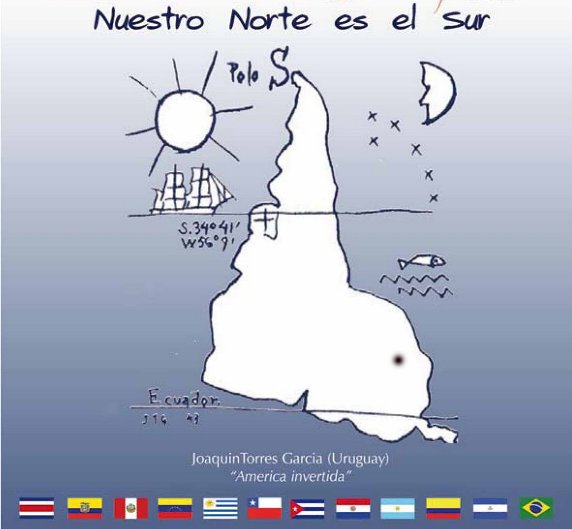
I was in Uruguay from April 14th to 27th!
It was my first time to cross the Atlantic, indeed the farthest I’d been from home since my last time in Australia in 2002.
What took me to the second-smallest country in South America was yet another you-only-pay-30%-of-travel-costs European youth project. This one’s called Grassroots Youth Democracy. In it, youth from Greece, Italy, Ecuador, Uruguay, India and Mauritius will participate in joint research on the water context of each participating country, which in turn will culminate in a media product and relevant campaign to raise awareness on the issue of water as a basic human right and common good.
Grassroots Youth Democracy is separated in phases and will take most of our time for the rest of 2015. Phase 1, which was the purpose of the trip I just came back from, was a week-long seminar on water rights in general. Participants had the chance to make presentations of what the water context in their specific countries is, and we also made a first draft of the plan we’re going to use for organising this international campaign between ourselves: who’s gonna do what, what our research methodology will be, what we’re going to with the data etc. After all, co-ordinating a local team can be hard; one strewn across four different continents? Yeah.
Phase 2 will take place in May in Rome and will consist of a media seminar: teaching the participants how to use a camera, do interviews, edit videos, update a website and such things I have the skills to help with. Thank you, University of the Aegean!
Phase 3, which will start right after Rome and last until mid-July, will have the participants from the extra-EU countries come to Greece or Italy and do a field research on the water situation in the respective country, that is collect data for articles, videos and other material to be used in the campaign. There will be interviews with NGOs, analysing stats and delving into the unique water-specific problems of that country. In Greece, for example, the participants will look into what happened with EYATH and its privatisation and how it was avoided by the resistance of the civil society through the 2014 unofficial referendum. They will also research the problem of the lack of drinking water in some Greek islands, such as Aegina, and the sometimes even more problematic solutions corrupted authorities have come up with to alleviate the situation. These are just some examples.
Phase 4 will start right after Phase 3 and last until September. Basically it will be like Phase 3, only the other way around: the Italians and the Greeks, of which there’s four of each, will do the same kind of field research in pairs in Uruguay, Ecuador, Mauritius and India. This is when I’m going back to Uruguay for two months, during the southern heart of winter! No Greek summer for me this year.
After all the above, we’ll collect all the data we’ll have got and make something out of it: a small book, an online database, a documentary, a social media assault… a little bit of everything. This will be our awareness campaign (and I hope it will end up a little bit more exciting than I’m afraid I’m making it sound here.) There will be a final conference/presentation of results but not a lot is known about it yet.
To be perfectly honest, Phase 1 in Montevideo, the one that just finished, needed more outdoors activities. The presentations and material discussed on water issues were interesting and our team-building was successful, but after a certain point I found it hard to concentrate on Powerpoint after Powerpoint and group brain-storming activity after group brain-storming activity. Being in the same room for hours on end with little chance of going out in the warm Autumn sun apart from during the short coffee breaks and the lunch (which was admittedly DELICIOUS and very vegetarian-friendly—THANK YOU CRAZY MARIO, cook of La Fonda!) made it much worse. During the first few days we saw practically zero of the city and at the end of each session I felt much more exhausted than I believe I should have.
No matter. In the end it was a valuable getting-to-know-you with the team and we did some important work. We will just have to work hard from here on out.
…what? You want to read about Montevideo and Uruguay, NOT the seminar? What are you, crazy?!
OK, get this: Uruguay is an extremely interesting country, given its small size and low importance on the grand scale of things. Sorry, let me rephrase that, because everything that’s ever taken place on this planet is of extremely low importance on the grand scale of things—low importance as far as human societies go; countries, politics… you know, that sort of thing. I mean, what do you know about Uruguay?
What I knew was that the country’s (now ex-) president donated 90% of his salary to charity and generally lived super simply, and that recently they legalised marijuana. That’s pretty much everything /r/worldnews would let through the filter. Ahem…
Let me tell you: both of these things are true.
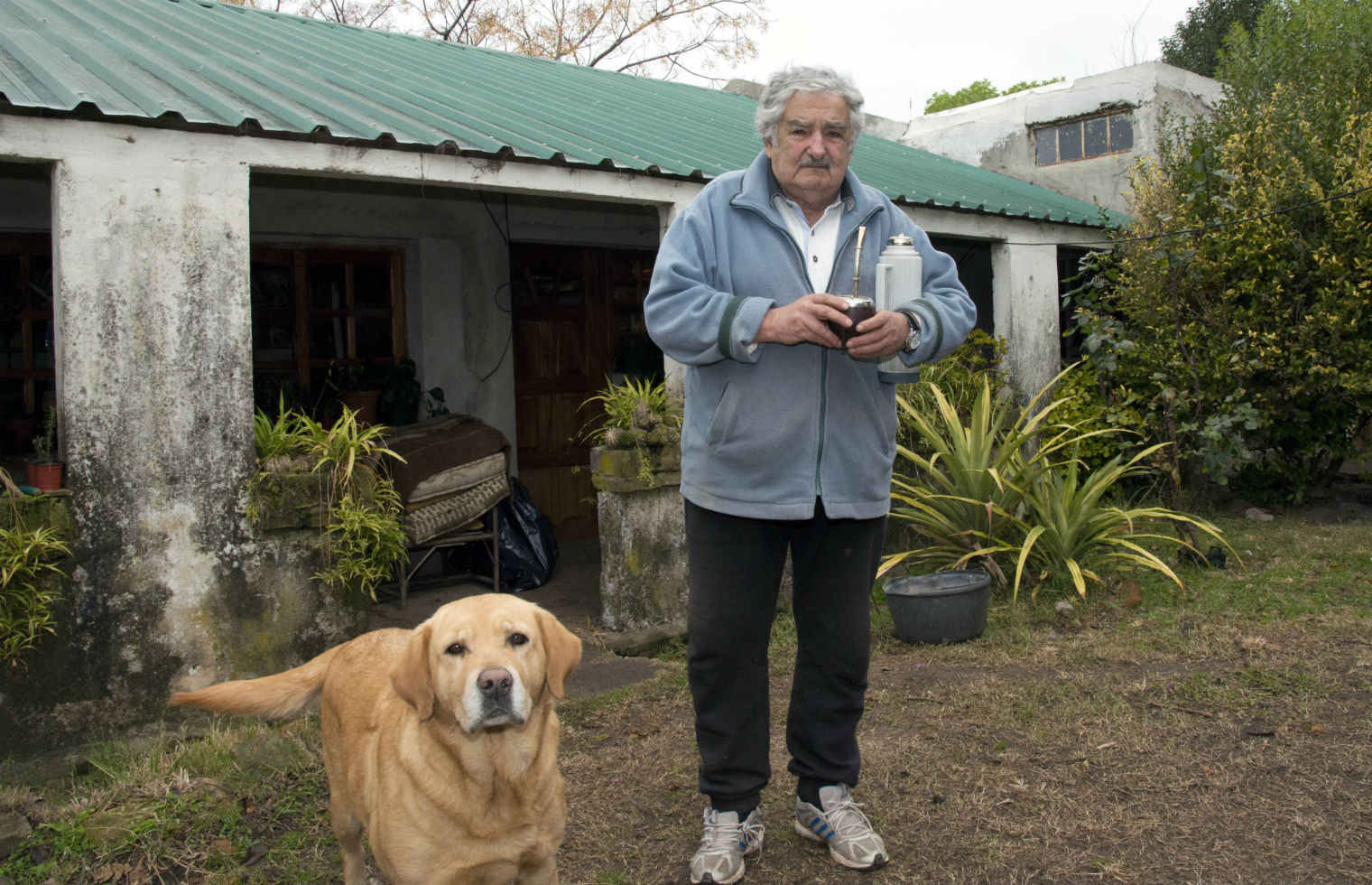
José “Pepe” Mujica is seen as a bit of a populist in Uruguay itself, but here are eight reasons why he should be missed by the rest of us, according to The Independent:
1. He donated 90% of his salary to charity.
2. And lived on a farm.
3. He drives a 1987 VW Beetle.
4. And picks up hitch-hikers.
5. He legalised marijuana.
6. He leaves the economy in rude health.
7. He’s just not like other politicians
8. And all that after being shot six times and being put in jail for 14 years for opposing the country’s former dictatorship.
Have a look at the article for a few more details, it’s worth it. What are the chances a guy like this could ever be the leader of your country?

Now, that other thing. “You know that in Uruguay marijuana was recently legalised, don’t you?”, said one of the Uruguayan participants to me before I could even ask her anything about it. “Everybody does it here. Even ten years ago people in suits would light one up after work. The thing is, you can’t go somewhere to buy it. Not like that. You have to be a resident and a member of a marijuana club if you want to purchase it. But many people have a little plant or two at home and will soon offer you some!”
I suppose the above is true for young people, but who knows? It didn’t seem to me that marijuana use was 100% socially accepted in Uruguay, there must be some controversy remaining, but it looked close to it. I say they have the right idea. There really is zero reason marijuana should be as illegal as it is in such big part of the world. Zero. Addiction-related issues, whenever they arise, should be treated medically and psychologically, similar to the way alcoholism is treated, not be a matter of concern for law enforcement. This system has already been adopted in a lot of countries. Have a look at this map caught from the wikipedia article on the legality of cannabis around the world:
But there’s a bit more to Uruguay than that.
What does this flag remind you of? They have the same number of stripes, too. Want another fun fact that goes with the similarity between the flags? Both Uruguay and Greece were de facto created in 1828. But, as I learned recently, the Greek flag as we know it now was standardised during the military dictatorship. Before that it used to be simply this:
This was the state flag and the one we use now was the merchant and national flag, before the former was abolished completely.
Back to the other country with blue and white stripes on its flag.
Uruguay’s name comes from the river forming the natural border between it and Argentina. It is the indigenous Guaraní language for “the river where the painted birds live.” Beautiful image, isn’t it? It flows out into the that bay to the left of the map, the famous Río de la Plata — the river plate. It’s a hallmark and a point of reference for both Argentina and Uruguay. Some consider this formation more of a river delta than a bay, but really it’s somewhere in between: in Montevideo and even as far out as Punta del Este, the water is much less salty than normal. There’s no clear point where the río ends and the sea starts. Truly a unique formation.
Next: a brief overview of the country in video form. This video was funded by the Uruguayan Ministry of Tourism. I’m serious.
Uruguay es el mejor país: Uruguay is the best country. A semiotically complete touristic message if I ever saw one. We should try something like that back home.
In fact, there’s plenty of other policy “novelties” this country has going for it we should be trying out in Greece. Barring the relatively high cost of living, the not-too-great wages and the kind of plain landscapes (heh), in a few ways it really is one of the best countries out there. For a start, they have managed to stave off privatisation of their public sector almost completely, only selling off their mobile phone operators. Water itself has become a constitutionally-reserved state-managed human right since a relevant referendum was conducted in 2004. That’s impressive no matter what way you look at it. In addition, same-sex marriage has been legal for two years.
All the above together puts most of the “progressive world” to shame, let alone our backwards little country called Greece. Then again, Uruguay is a secular society, in stark contrast to our country where the embarrassingly rich church is still constitutionally connected to the state, which, just to remind you, means that Orthodox Christianity is taught at schools, priests are paid with our hard-earned IMF and European loan money (and pay no tax in return) and the country is still, for all intents and purposes, exclusively Orthodox. I won’t get started with nationalism and Greek superiority/inferiority complexes…
Tell me, how many people would you imagine enjoy the benefits of living in this little country? It’s whole population is barely that of Athens at ~3.5 million people, with roughly half of that concentrated in Montevideo. This bit surprised me, because I’ve always thought of South America as the land of mega cities. To illustrate, nearby Buenos Aires has a metro population of almost 4 times that of Uruguay as a whole, and Sao Paulo, which isn’t such a long way away either, is close to 6 times that.
For its modest count of human residents, this small country is the holder of a different record: it has the most cattle-per-capita ratio in the world: there are roughly 3.59 Uruguayan cows for each Uruguayan person. Impressive as that may be, note that this number still collectively accounts for just ~1% of global bovine populations.

With so much mooing going on, you’d think the guys would have some decent yogurt. Nope… Even the “integral” yogurt, the one most similar to consistency to the ones we enjoy in Greece, contained sugar. This reminded me of Bulgaria, which most Bulgarians claim to have fantastic yogurt—supposedly very successful and sought after in South Korea. Needless to say, this legendary Bulgarian dairy product is nowhere to be found, or perhaps I tried it and just couldn’t tell the difference. What can I say, years of straggisto are bound to leave a mark.
Not all Uruguayan products are shoddy, though. Far from it. Mate (pronounced máte) is for Uruguayans what frappé is for Greeks, or, according to some Greeks, what it used to be, as freddo espressos have become more popular. Mate is an invigorating hot drink, like coffee or tea, ideally shared among a circle of friends. People drink it in wooden cups that slightly look like coconut shells but are made of gourd (or calabash). In it they drink the mate herb tea, which they infuse with hot water poured from a thermos and refill many times. It is drunk with a metal straw-like instrument called a bombilla (pronounced bombisha in Rioplatense Spanish). In the video below you can see an English speaker preparing mate.
I think I’ve written enough for now. I congratulate you if you made it this far! Here are some pictures for your viewing pleasure, half of which are taken by me and the others by Martina.
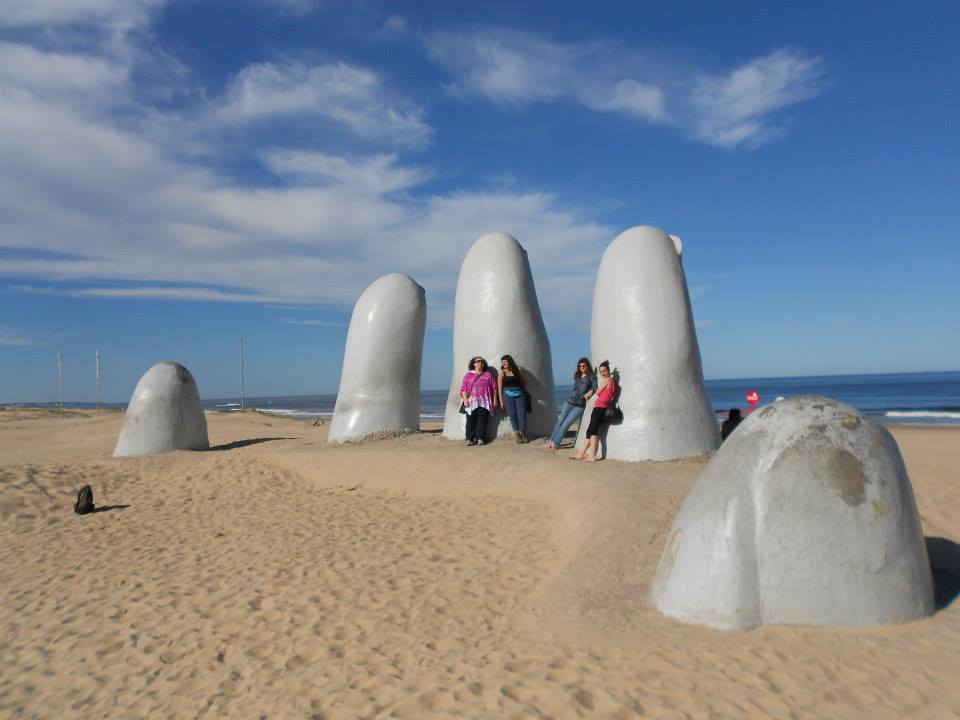
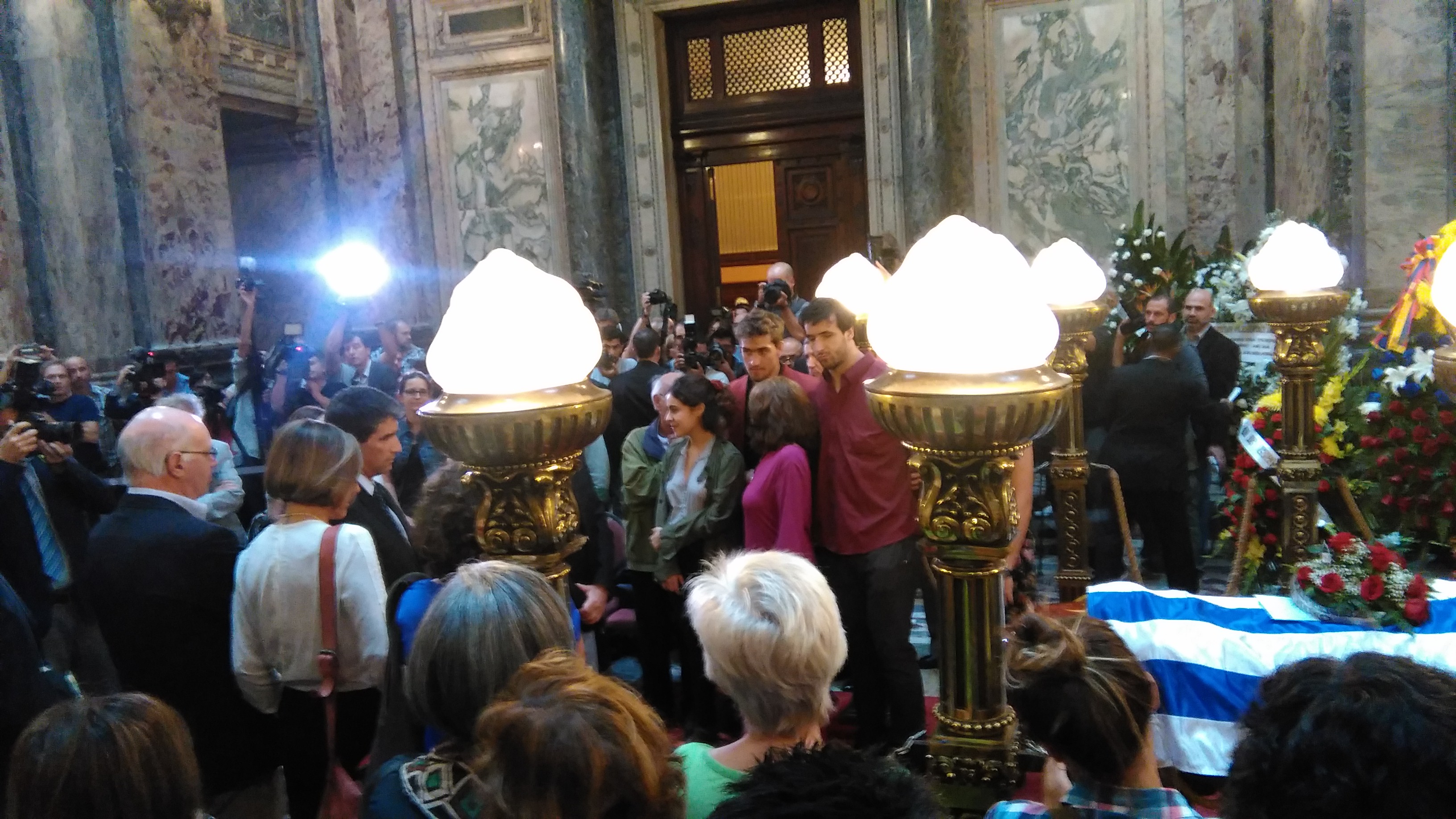

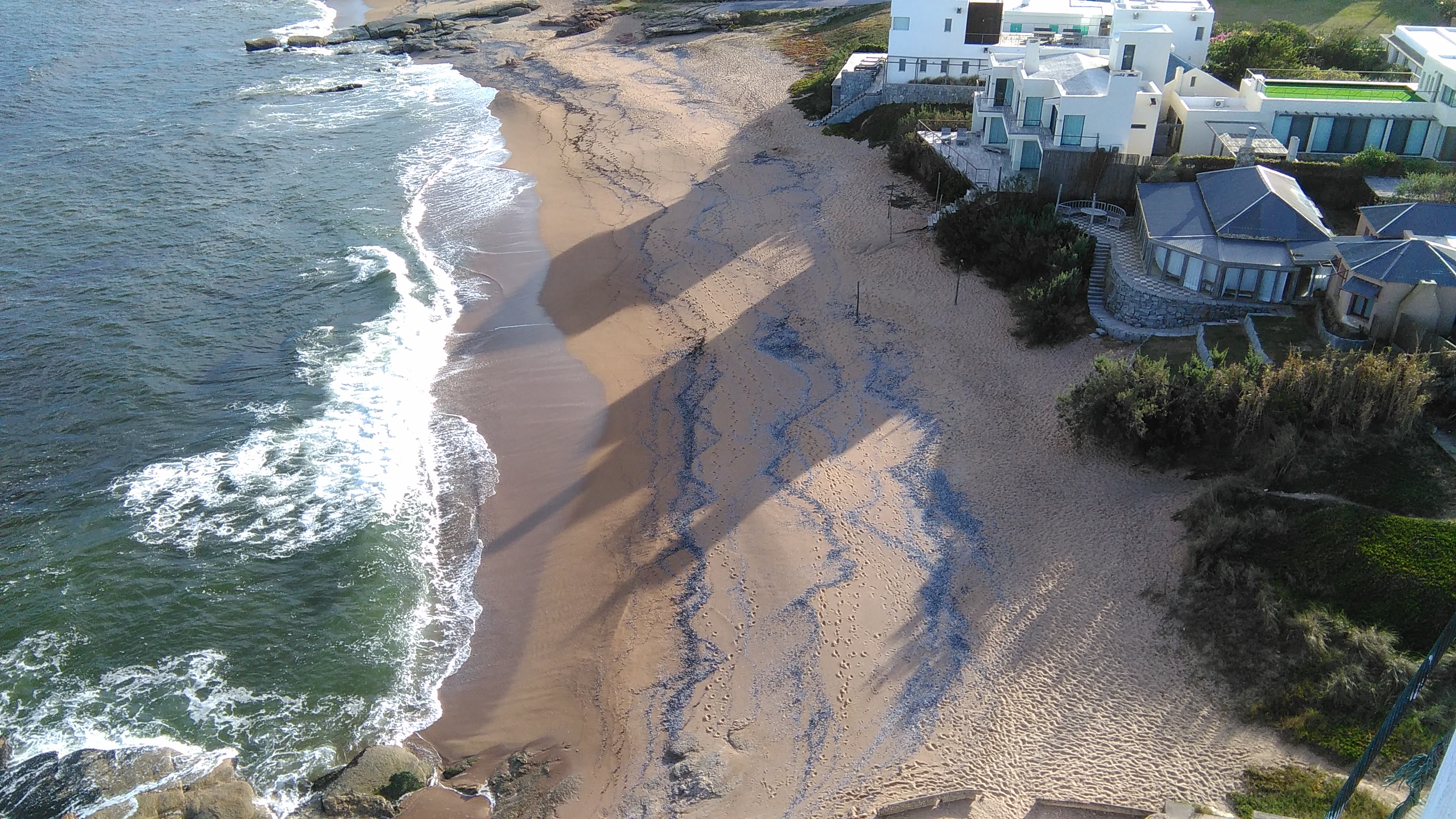

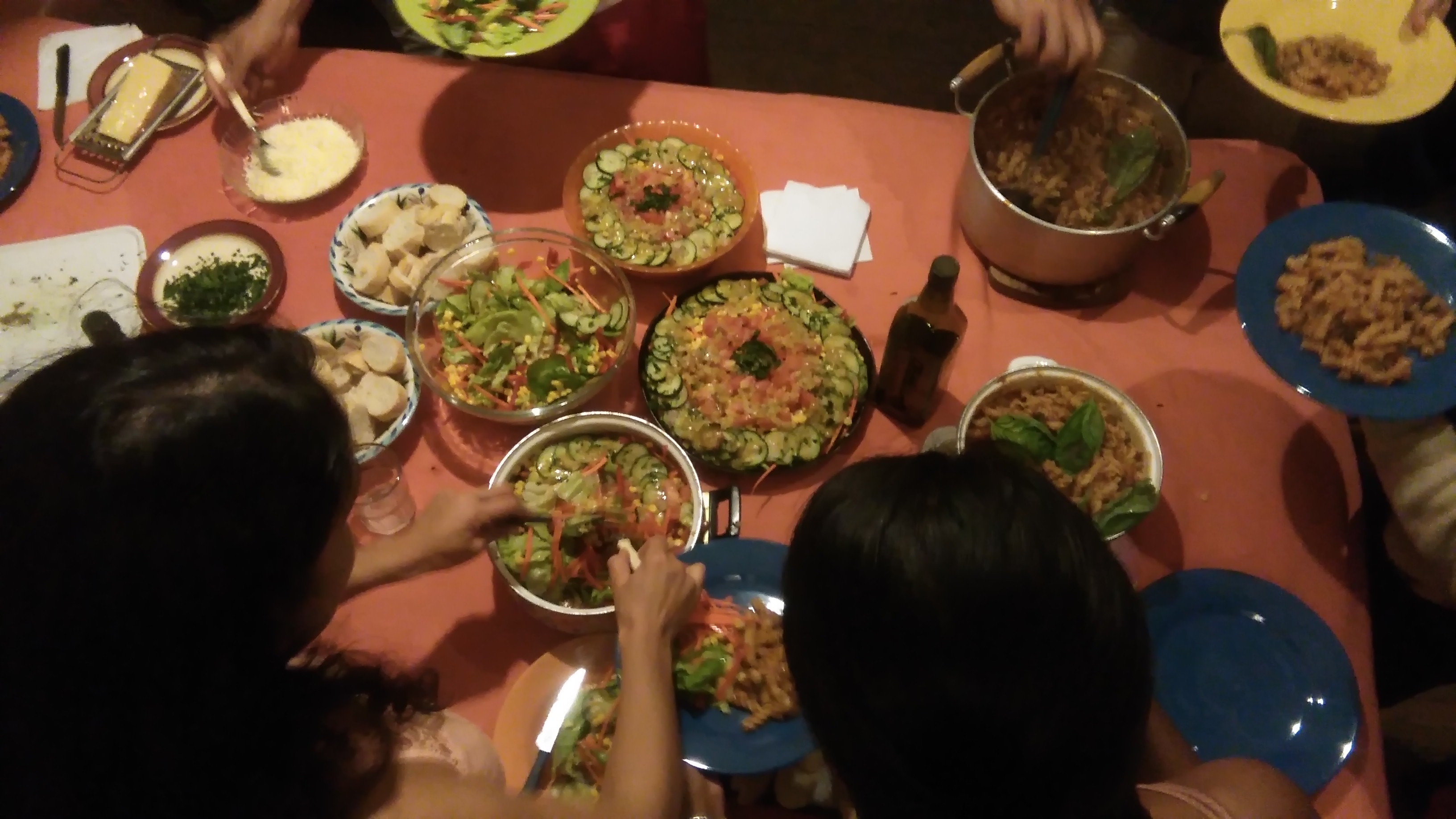
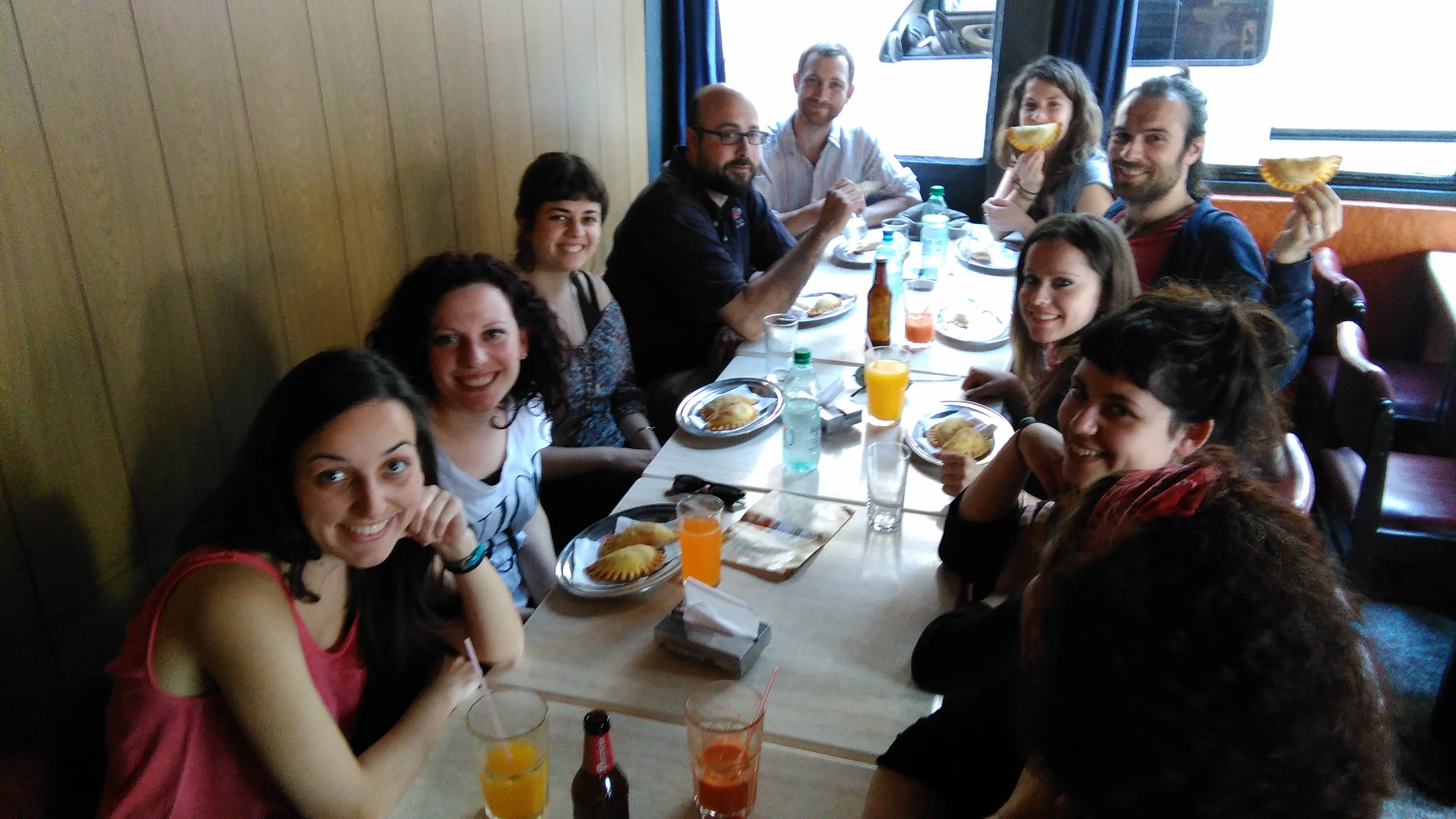
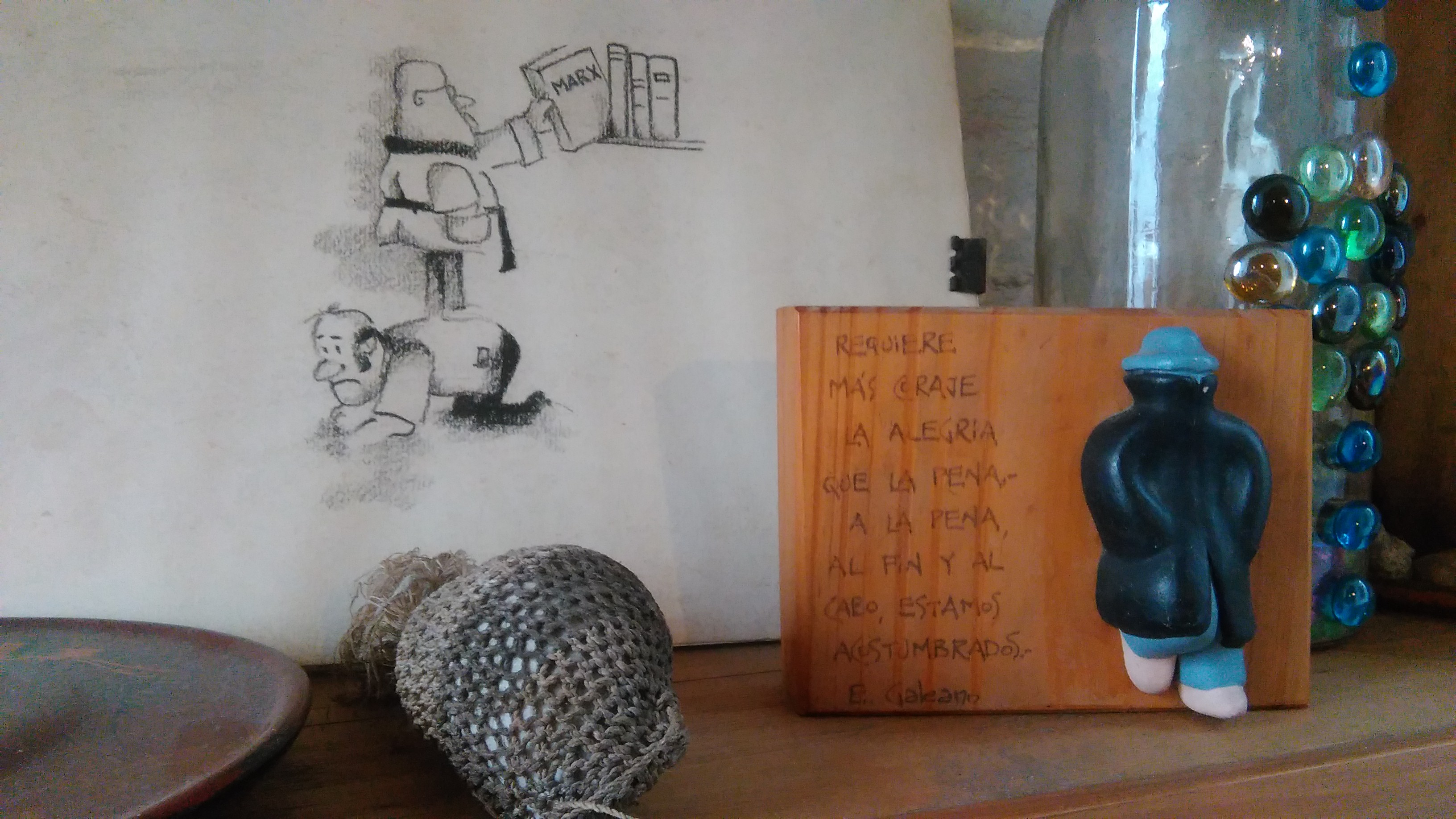
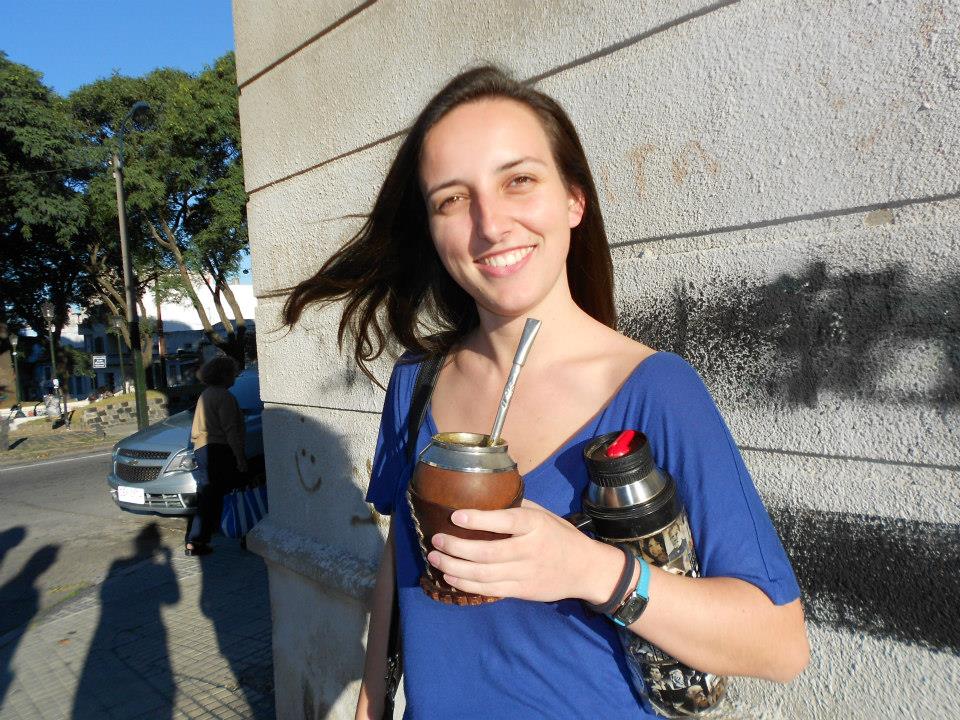
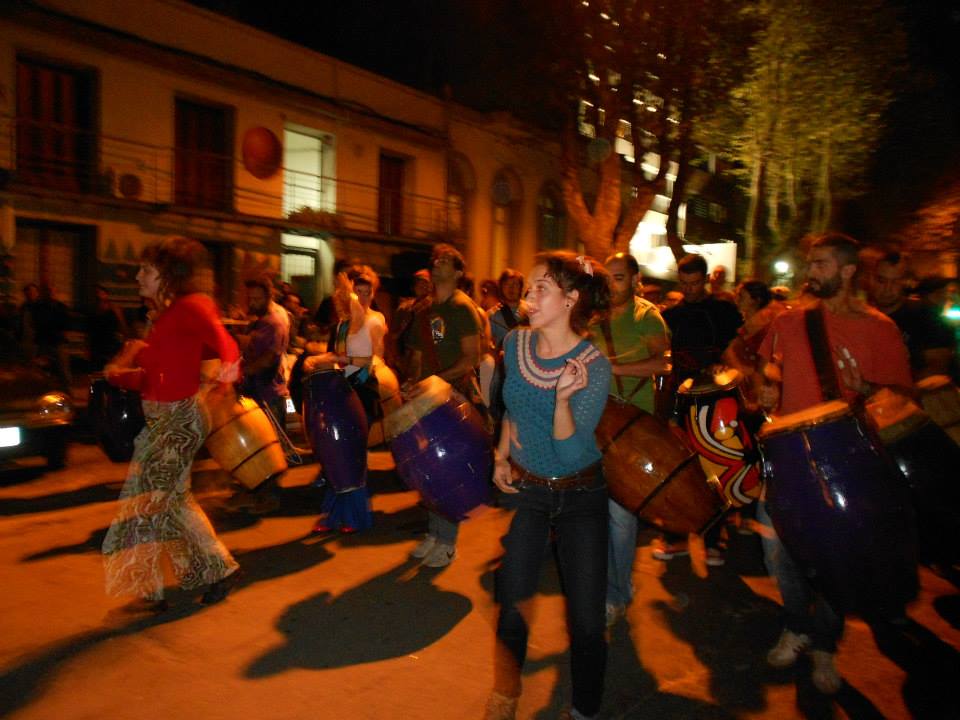
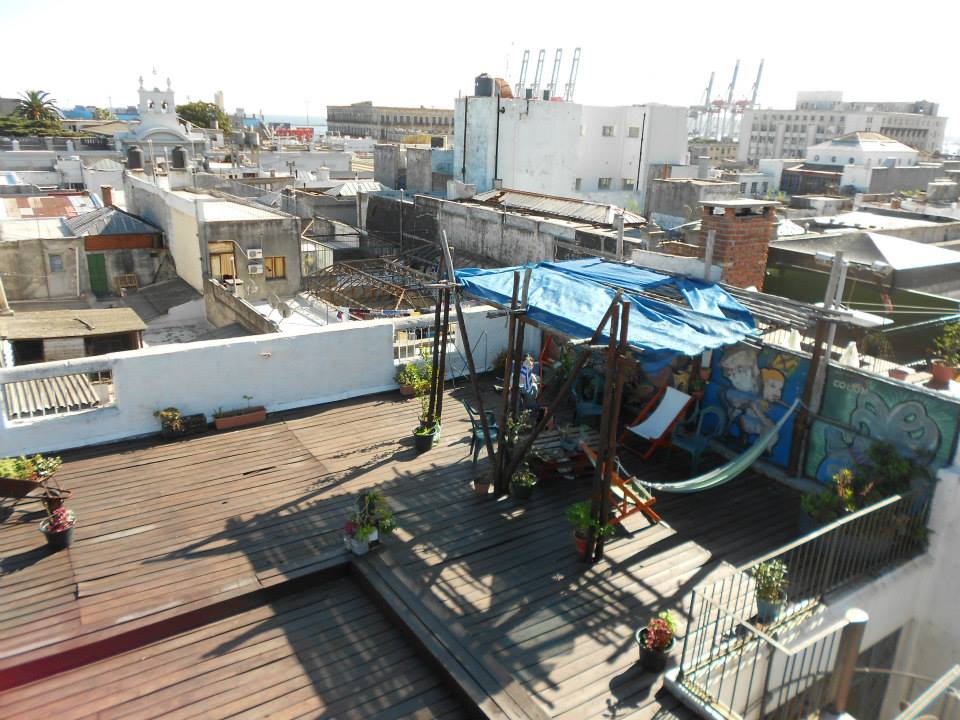
For dessert:
There is a Milonga at the centre of Montevideo, a public place where people of all ages meet a few times per week to dance and learn Tango.
The song below can be heard most evening at the Milonga and, as I was told, features in the playlists of most tango meetings. It’s called the “Greek tango.” I’m sure you know it.
ME, MYSELF AND FULFILLMENT // CUBILONIA
Thought you knew the real origin of the name Cubilone? Well, you thought wrong, because in the following video I reveal all for the first time.
Jokes aside, I prepared this video as part of the online preparation for the upcoming training in Olde Vechte in the Netherlands, the same place I did I SEE GREEN in February-March 2013 and REDUCE, REUSE, RECYCLE in November of the same year, for which I never wrote anything of note as far as I can recall, so clicking on the words will do nothing particularly significant.
Supposedly, this video is for presenting myself to the rest of the international group and what fulfills me in life. That was the mission. Do you think I managed to do it? I set off with high expectations but the impressions I’ve got from other people (apart from you Daphne and Mario!) have left me wondering. I can certainly say I had high expectations from the idea, and still do (the things I can write about Cubilonia! I could fill books with interesting things about that place) but I’m disappointed in, you know… why should I do it?
Looking for inspiration; maybe find it, proceed to let other people influence outcome too much; idea that felt awesome looks ridiculous in the space of a single hour when faced with awkward reception and blank stares. Artists shouldn’t listen to what other people think. Right? Artists and creatives don’t create for anyone but themselves. Right? Self-expression is of top importance. Right?
Gramatik – Tranquilo
I had been looking for this song for ages. Then uTorrent offered me Gramatik’s whole discography for free when I installed it and I had the opportunity to look through Gramatik’s entire back catalogue to finally find this gem. I knew it was Gramatik!
Traunquilo. A solid piece of advice I could definitely use these days in particular. If my goal is to go with the flow, these days I feel like a leaf stuck on a rock in the middle of the river. July will be a tough month.
POLYGLOT DIARY — 22/6/2014
Има много тексти, че съм пишал по български тези дни, но още не ги съм поставал тук.
Скоро ще купувам нов лаптоп, и през уикенд търсих и четих критики за най-евтино и едновременно най-добро разтваряне, нещо, че ще използвам за работа и игри за много години още . Мисля, че намирах го накрая. Утре говорих с човека от магазина на компютри и отивеше много добре. Радвам се, защото говоря с помощници по-често, и бързо уча български. Елена и Боряна помагат много, и другите и аз ходим на уроките с веселие.
C помоща на Memrise, също уча да пиша с клавиатурата, но още много бббааавввеееннн съм. няма проблем, добро нещото закъснява да стане! :Ъ

